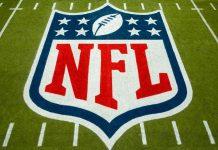

Are you looking to bet on an upcoming match but unsure where to begin? Knowing how to interpret betting odds is a fundamental skill for a successful sports bettor. Sports betting odds can appear daunting if you’re unfamiliar with how to interpret them.
The last thing you’d want is to make bets that are unlikely to succeed or provide poor value for your money, right? So whether you choose to bet online or in person, having those odds explained is crucial. Unfortunately, many bettors still struggle with the intricacies of sports betting odds.
Whether you’re a casual bettor or a seasoned gambler, this article will walk you through the fundamentals of sports betting odds. We’ll also provide tips on employing them in your wagering endeavors and increasing your odds of winning.
Before delving into that, let’s examine what sports betting odds represent and their significance in determining bet sizes and payouts.
An Overview of Sports Betting Odds
Betting odds are numerical representations indicating the probability of an event or events happening. Bookmakers compile odds to calculate the potential payout and assess whether a bet is worth making in a sports betting event. For instance, FanDuel NFL odds represent the possible probabilities and payouts associated with various outcomes in NFL games.
Probability is how likely something will occur, expressed as a percentage chance. On the other hand, odds are the ratio of the likelihood of an event occurring to the likelihood of it not happening. Potential payouts are the specific amount bettors can win based on the odds attached to your bet and how much you wagered.
Higher odds mean that the outcome has a lower probability or is less likely to happen. That means your chances of winning are lower. The upside is that the payout is higher if you win the bet.
Meanwhile, lower odds suggest that the outcome has a higher probability or is more likely to occur. This means you have more chances of winning. The drawback, however, is that the potential payout is lower.
You may see the odds presented in more than one way. Some formats may vary by country or by sport. Your sportsbook of choice can also influence the presentation of the odds. If you’re unfamiliar with them, you’ll likely get confused when placing your bets.
Understanding Sports Betting Odds Formats and How To Interpret Them
Regardless of how sports betting odds are written, they do not impact your winnings. They are only alternate ways of presenting the same odds and make no difference in payouts.
While they may offer the same information in distinct ways, understanding sports betting odds formats can be a strategic advantage. They can avoid confusion and help streamline the research process, allowing you to interpret data and make educated bets quickly. Below, we’ll discuss the three sports betting odds formats and how to interpret each type.
Fractional Odds
These odds are commonly used in the UK and Ireland. They are presented in the form of fractions, such as 3/1. The numerator, or the one on the left, indicates your potential winnings, whereas the denominator, or the number on the right, signifies the original amount you waged.
Based on the example above, you win $3 against every $1 you wager and get your dollar back. That means you will receive your initial stake ($1) plus the profit ($3), resulting in a total payout of $4. Suppose you bet $10 at 3/1 and win the bet. You will yield a $30 profit ($10 x 3) in addition to your original stake, which is $10.
When converting fractional odds to implied probability, the formula required is the following:
fractional odds implied probability (1 ÷ ((Fractional Odds) + 1)) x 100. Note that you can also use an odds converter online.
Using the same example of 3 to 1 odds for a team to win, the implied probability would be 25%.
Decimal Odds
These odds are popular formats, particularly in Europe and Australia. The number for decimal odds indicates the amount you will win for every $1 wagered. It’s much easier to understand than fractional odds and comes with more betting options. You can instantly spot the favorites and underdogs in decimal odds by looking at the numbers.
For instance, the team has odds of 3.50, and you bet $100. In this case, you would win a total of $350. However, since the return comprises your original stake of $100, the profit you gain on a winning bet would be $250.
With decimal odds, the higher the number, the less likely it will be for the bet to win. That’s why fewer decimal odds mean the team is favored, while a higher number represents the underdog.
When determining the implied probability in decimal odds, the formula required is: implied probability = (1 / odds) x 100. Using the 3.50 decimal odds in the example above, the implied probability is 28.57%.
Moneyline Odds
Also known as American odds, these are common in the US and Canada. They are presented with either a positive or negative number, which signifies the potential profit or loss for a $100 wage. The plus (+) or minus (-) symbol precedes the numeric odds for both sides of a bet. They also indicate whether you’re wagering on the favorite or the underdog on a moneyline bet.
The (-) symbol represents the favorite on a moneyline bet. The negative number shows the amount you would need to wager to win $100. For instance, with a -130 favorite, you must risk $130 to win $100 from the sportsbook. You either lose $130, win $100, or your wager results in a push.
Meanwhile, underdogs are identified by a (+) symbol. The positive number refers to how much you’ll win if you wager $100. A +250 underdog signifies that you risk only $100. But if the bet is successful, you win $250. You either lose $100, win $250, or your wager results in a push.
Tips to Increase Your Winning Chances Using Sports Betting Odds
Learning to use betting odds is crucial for every successful sports betting experience. Whether you’re placing bets on moneylines, spreads, totals, or any other betting market, you can improve your chances of making profitable bets once you master the effective use of sports betting odds. Consider the following tips as a starting point:
Recognize Favorites and Underdogs
Betting odds enable you to easily recognize favorites and underdogs in a matchup. Favorites have better odds and a higher probability of winning bets, meaning lower payouts.
Conversely, the odds of an underdog are lower, so the chances of winning the bets are less likely. But you’ll also get a larger payout if you make a successful wager. Such knowledge can help you place bets that match your betting strategy and risk tolerance.
Determine the Potential Payouts
Determining the total amount you can win from a successful bet is crucial to managing your bankroll and expectations. By interpreting the betting odds, you can make more informed decisions on how much you want to bet. You can also evaluate the risk-reward ratio of various bets.
Assess the Value of the Odds
Making profitable decisions in sports betting involves assessing the value of the odds. You can take advantage of various sports betting tools online. But it’s vital to note that no bet comes with a guaranteed win. Hence, ensure you place wagers responsibly by carefully betting within your budget and managing your bankroll.
One Important Thing to Remember
Basic knowledge of odds and probability and how to use them in placing bets can empower you to make more informed choices. However, it may take some time, practice, and research to master this skill.
Discipline and strategic approaches are also necessary for successful betting. Likewise, finding the best betting odds is essential to maximizing your potential winnings in sports betting. So, take the time to compare a wide selection of competitive odds and betting options from multiple sportsbooks.











